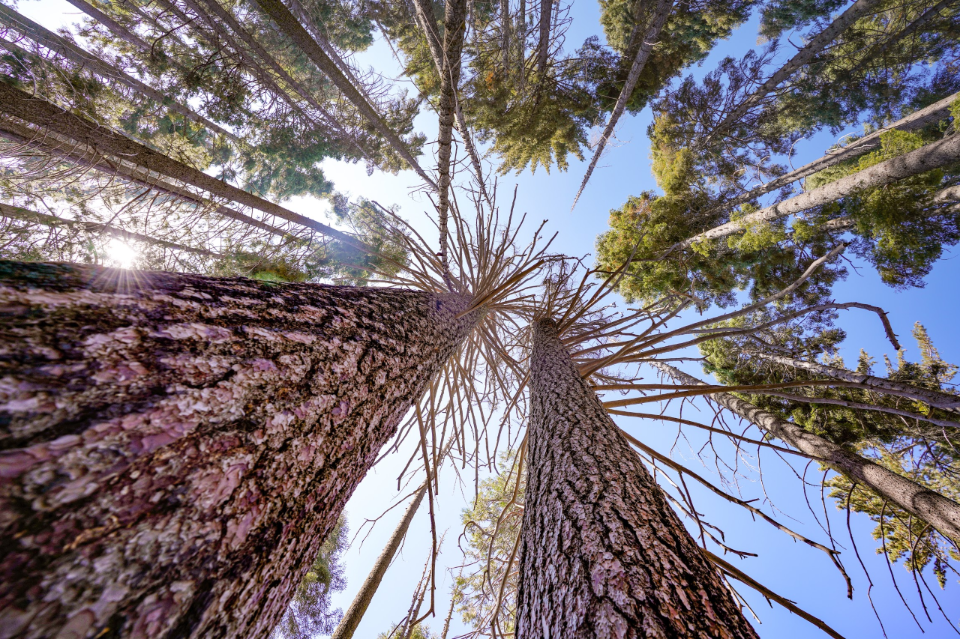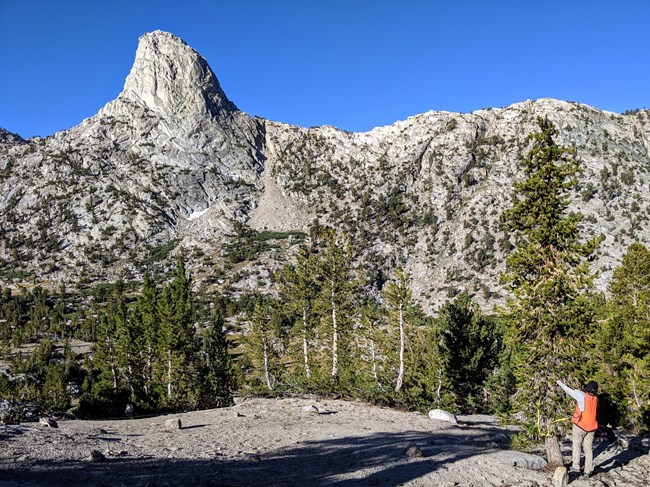Last updated: May 16, 2023
Article
White Pines in Decline - Research Highlights 20 Years of Change

Photo courtesy of Joan Dudney, University of California, Berkeley
Sequoia and Kings Canyon National Parks are home to five species of white pine: sugar pine, western white pine, foxtail pine, whitebark pine, and limber pine. “White pine” refers to a group of closely related pine species that share common characteristics and thus also share vulnerabilities to the same diseases, insects, and environmental threats. Sugar pine grow in mid-elevation forests with white fir, incense-cedar, and giant sequoia; western white pine are in the upper montane forests with red fir; and in the highest subalpine zone, whitebark, foxtail, and limber pine grow in rugged rocky terrain, with harsh weather and a short growing season. These pines play important ecological roles, including regulating processes such as snowmelt and stream flow and providing habitat and food for birds and mammals.
But white pines are threatened by multiple stressors that have led to sharp declines for several of these species. These stressors include the non-native pathogen white pine blister rust (WPBR), mountain pine beetles (MPB), a warming climate, and altered fire regimes. An extensive survey for white pine blister rust infection (a non-native pathogen) in white pines in the 1990s provided a baseline of data about the status of these pines across Sequoia and Kings Canyon. Researchers and park managers, concerned about changes in the health of these pines, conducted a re-survey of the original study plots between 2013 and 2017. This was a collaborative project among the Sierra Nevada Inventory & Monitoring Network, University of California - Berkeley, the USGS Sequoia-Kings Canyon Field Station, Sequoia & Kings Canyon National Parks, and other partners.

Photo by David Barasch, Geoscientist-in-the-Parks intern
What Did We Learn?
The published paper (Dudney et al. 2020) reports:
-
Measured sugar pine tree density declined more than 50 percent in the past 20 years; this translated to an estimated 35% decline throughout these parks. Sugar pine’s elevated mortality is primarily attributed to WPBR and drought-induced MPB attack. Fire also contributed – a higher percentage of trees died in areas that had burned compared to unburned areas.
-
For western white pine, WPBR infection rates increased from three to over eight percent, and there was a 13 percent decline in the abundance of measured pines. Similar to sugar pine, WPBR and MPB contributed to this decline. WPBR extent also increased spatially, infecting western white pines in 55% of plots compared to 18% in the first survey.
-
For the subalpine species, WPBR infection occurred in just one percent of the whitebark pine trees sampled. No WPBR was documented for foxtail pine within the plots. MPB attack was relatively rare in these high-elevation pines, even during the 2012-2016 drought, when this sampling occurred.
These changes are sobering, but the information gained is critical for informing decisions about management approaches for these pines. This work emphasizes the importance of long-term monitoring and targeted conservation and restoration actions to manage on-going threats to these valuable and diverse Sierra Nevada white pines.
More Information
For more information, see the Ecosphere publication cited below.
Dudney, J. C., J. C. B. Nesmith, M. C. Cahill, J. E. Cribbs, D. M. Duriscoe, A. J. Das, N. L. Stephenson, and J. J. Battles. 2020. Compounding effects of white pine blister rust, mountain pine beetle, and fire threaten four white pine species. Ecosphere 11(10):e03263.
